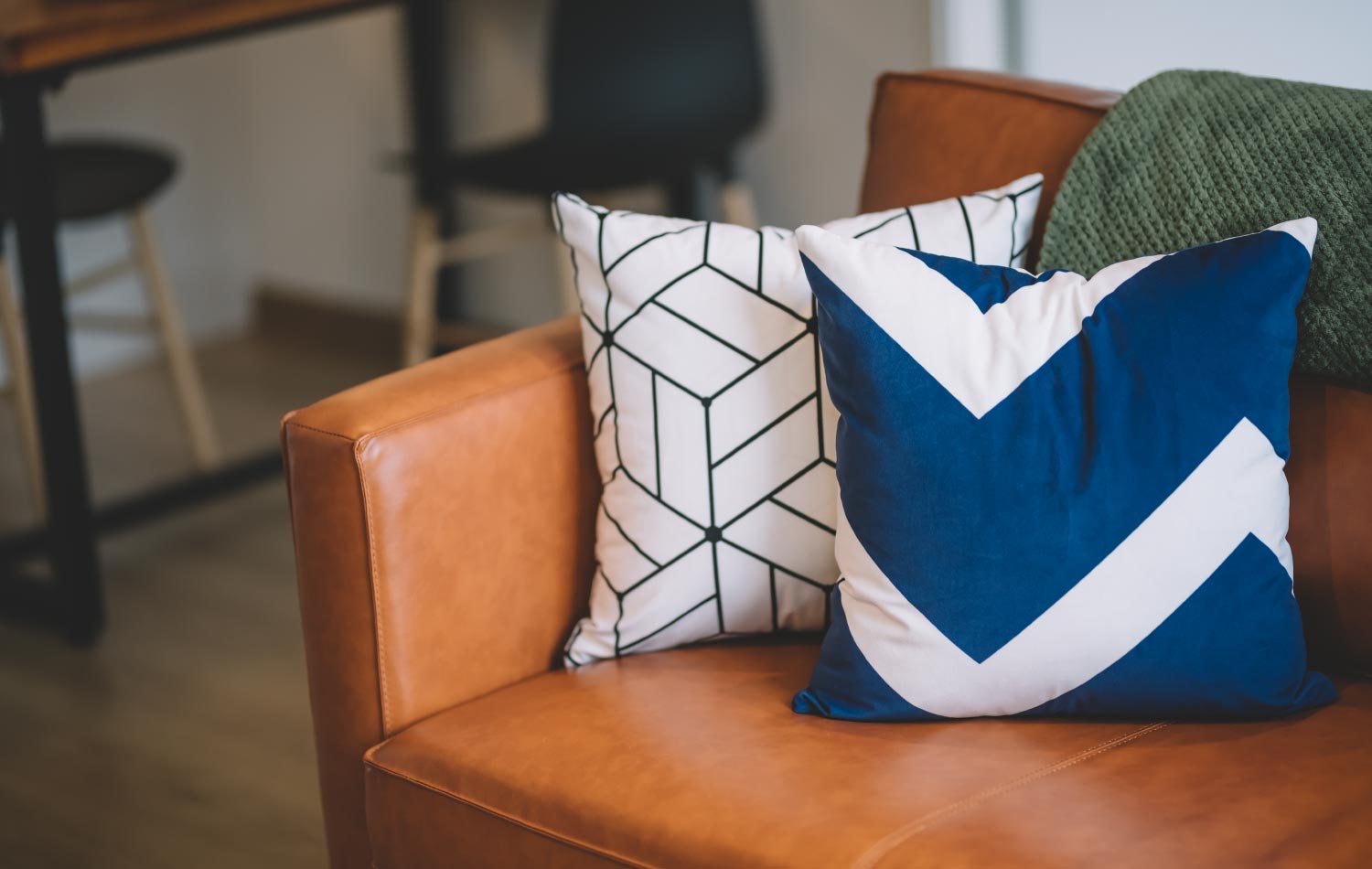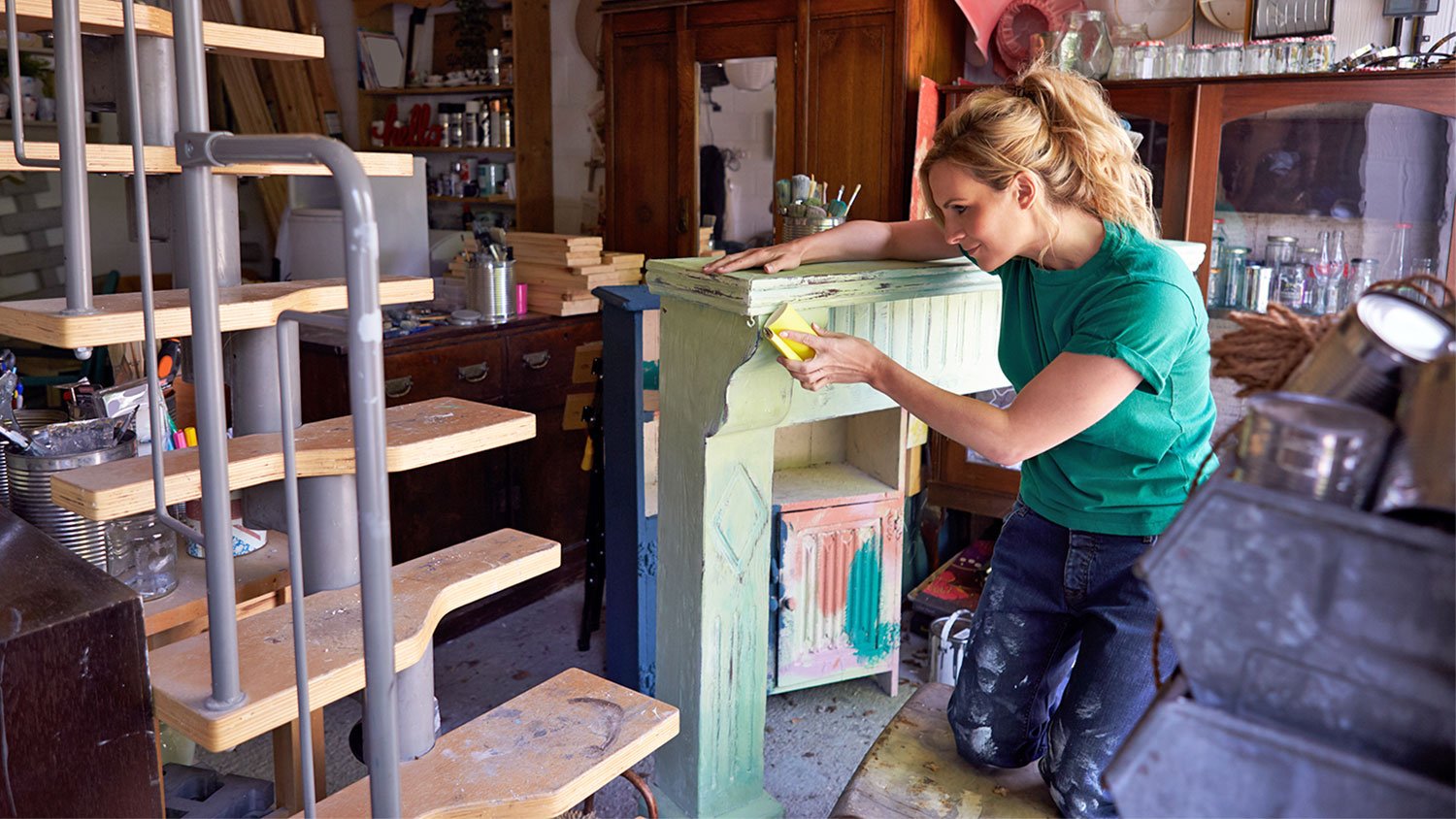How to Restore Your Faded Leather Couch So It Looks Like New
Breathe new life into your old leather furniture using these easy-to-follow steps


Normal wear and tear (think sweat, body oils, and even sunlight) can cause your once vibrant leather furniture to fade and crack over time. But you don’t need to toss it out and head to IKEA for a new couch—instead, you can repair slightly damaged leather with a few inexpensive materials from your local fabric store and a bit of elbow grease.
Note: If you feel like your leather sofa or chairs are more than just slightly damaged, or you’re more of a lay-on-the-couch than a fix-the-couch type, you can often hire a local upholstery professional who specializes in leather furniture refinishing and repair to do the job for you. This can cost between $195–$475, depending on the size, the amount of damage or fading there is, and the type of leather.
Difficulty: 2 out of 5
Time: about one day
Tools and Materials Needed:
Vacuum with upholstery attachments
Leather safe cleaning solution
Bucket for mixing
Three microfiber cloths
Leather conditioner
Leather recoloring kit (for significant color damage)
Tarp or blanket to put under your furniture
1. Determine the Type of Leather
Before you get started cleaning your furniture’s upholstery, determine what type of leather you’re working with.
Different varieties of leather will all have different care needs. Because leather sofas can cost between $1,500 and $4,000 make sure you’re not doing anything that could permanently damage your furniture in the process.
Here are some common types of leather:
Full-grain leather normally undergoes minimal processing and will retain both the look and feel of animal hide
Top-grain leather has a more polished look and feel than full-grain
Split-grain leather is similar to full grain in feel, but it can feel harder to the touch and requires more maintenance
Bonded leather is often made up of leftover pieces of scrap leather that have been rolled and pressed
Nubuck leather is harder to care for and is made from rawhide. It requires waterproofing in order to protect it from daily wear and tear.
Bi-cast leather is an inexpensive alternative to split-grain leather that is covered with a coat of polyurethane to give it the appearance of the more expensive top-grain leathers. Without regular maintenance, this type of leather is prone to cracking and peeling.
Faux leather isn’t leather at all, but a man-made alternative. It’s a great option for those worried about budgeting or leather’s environments and ethical impact.
2. Remove Loose Cushions and Vacuum

Remove the cushions and throw away any large pieces of trash or debris that you find (and return the missing remote to the coffee table). Then run your vacuum’s upholstery attachment across the entirety of your sofa.
3. Remove Surface Debris
Clean your sofa using one of your three microfiber cloths and either a leather-safe cleaning solution (be sure to follow the manufacturer’s instructions) or a bucket with warm water. Get the microfiber cloth damp, but not soaking, and use it to wipe down your couch. This will remove any surface dirt that the vacuum missed and any dust that has settled back onto the surface.
4. Tackle Stubborn Stains and Messes
If your sofa has stains that aren’t wiping up easily, consider a more targeted approach. These are some common stains and the best ways to remove them from leather surfaces:
Ink stains can be removed with rubbing alcohol. Target small stains with a Q-tip or cotton swab. As you work, swap out your swab often so you don’t spread the stain around.
If you’re dealing with food or blood stains, you can use a mix of cornstarch and lemon juice. Use two parts cornstarch to one part lemon juice to create a paste and gently rub it onto the stained area.
If your sofa has grease or oil stains, try to remove them using an absorbent powder like baking soda. Apply some liberally to the affected area and let it sit for a few hours so it has a chance to absorb. Use a dry cloth to wipe it up when you’re through. If you can’t get the powder up with a dry cloth alone, try using step three.
As with any cleaner, you should test an inconspicuous area before applying it to a place where color loss or damage would be noticeable.
5. Buff the Surfaces Dry

Leaving damp areas on your couch can cause streaking or discoloration. So after you’ve cleaned, use a fresh microfiber cloth and go over small sections of your furniture in circular motions until dry.
6. Retouch Your Sofa Color
If your sofa’s color has faded significantly from the sun, retouch the color using a leather recoloring kit. These can be purchased directly from your sofa manufacturer in some cases. If they don’t carry them, try a fabric or specialty store that deals with leather upholstery. If you’ve never attempted retouching your sofa’s color you may want to ask a pro for help when it comes to color matching your couch to the kit.
These kits each come with their own sets of instructions, so follow the manufacturer's directions. Remember to use the tarp to cover any nearby furniture or flooring that could be in the splash zone while you’re dealing with the recoloring kit, as the dyes can get onto places you don’t want them.
7. Protect Your Couch With a Conditioner
If your sofa’s color hasn’t faded all that much and just needs a slight tone tune-up, you can often get amazing results by conditioning your leather couch. These are available wherever leather products are sold. Follow the manufacturer’s directions when it comes to application and dry time.
The tarp will come in handy here, as well, and prevent any of the conditioner from leaking or dripping onto your flooring or other surfaces.
8. Enjoy Your Restored Couch

After spending a day (or a weekend) working on restoring your leather couch to its natural beauty, kicking back and relaxing on it will feel extra good. Although, after dedicating a weekend to getting your sofa looking its best again you might rethink the whole “feet on the couch” thing.




- How to Protect Leather Couches: 12 Foolproof Tips to Try
- Can You Steam Clean a Leather Sofa?
- 8 Tips for Conditioning Your Leather Couch Like a Pro
- Leather Furniture 101: How to Fix a Couch That’s Peeling or Cracking
- 5 Types of Furniture Leather and How To Choose the Best for Your Lifestyle
- What You Need to Know Before Choosing Leather Flooring for Your Home
- How to Get Stains Out of a Couch 9 Ways, No Matter the Material
- Is Professional Couch Cleaning Worth It: A Guide
- 6 DIY Tips and Tricks for Safely Cleaning Your Upholstery
- 14 Home Improvement Projects You Can Do in a Day (or Less)















